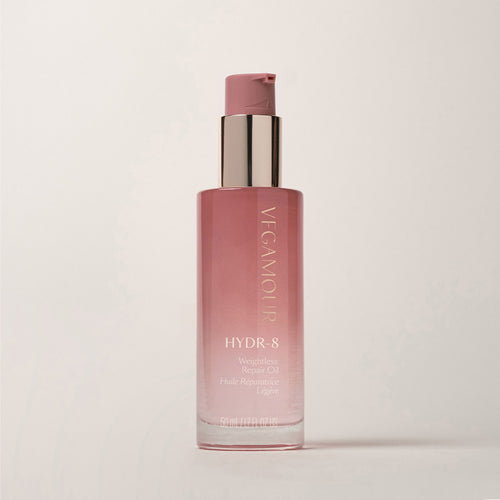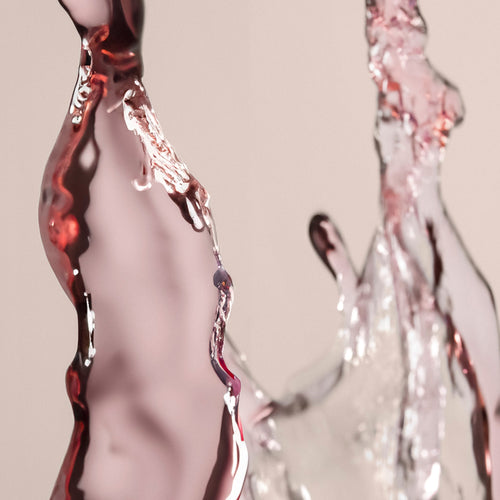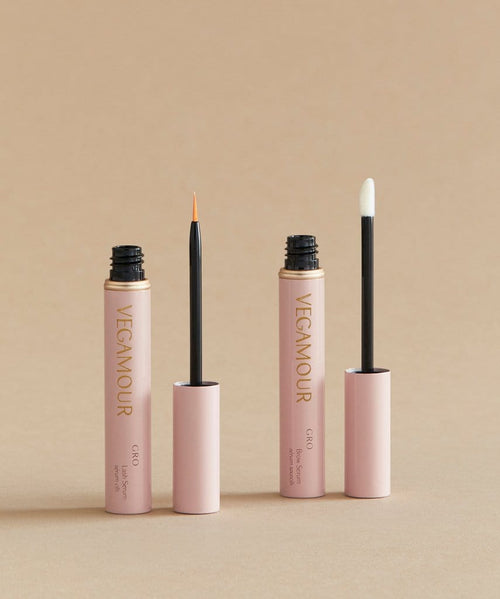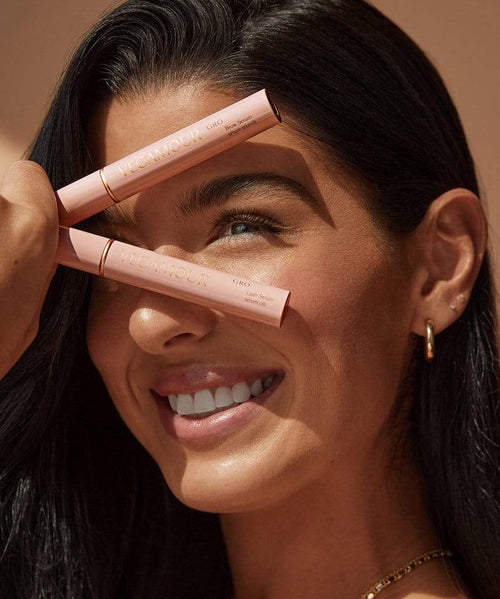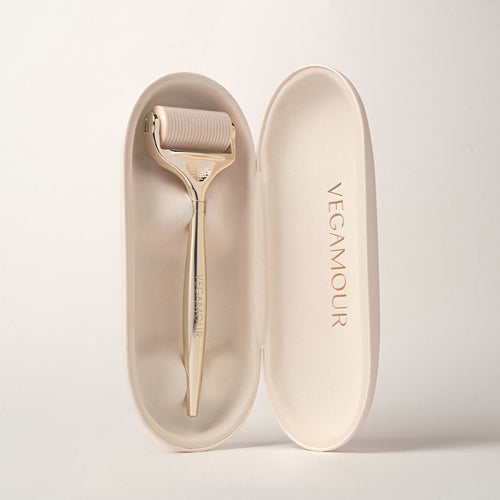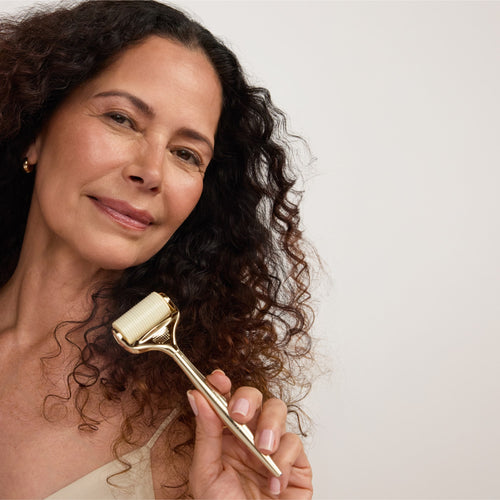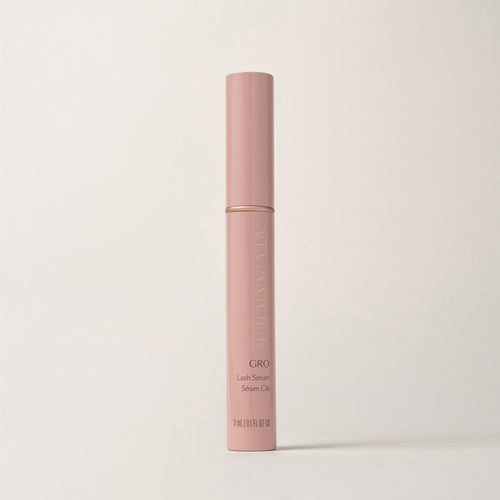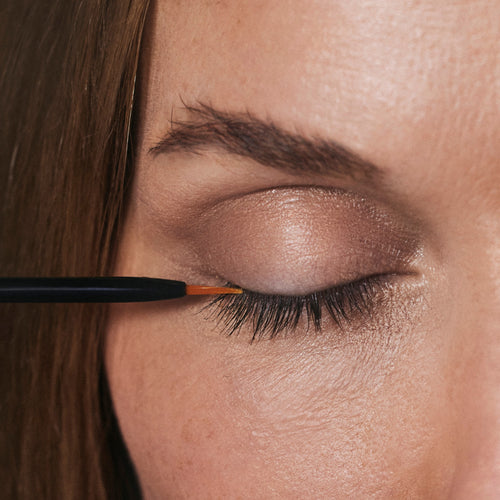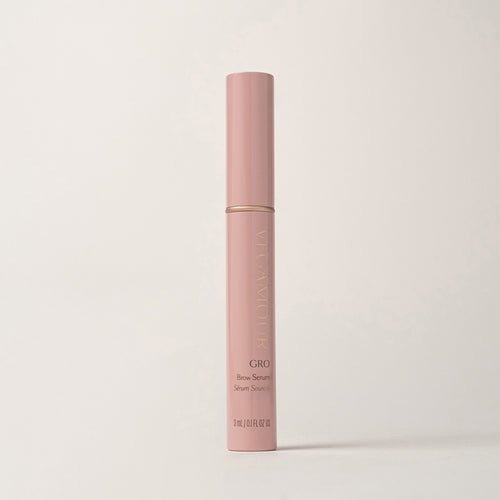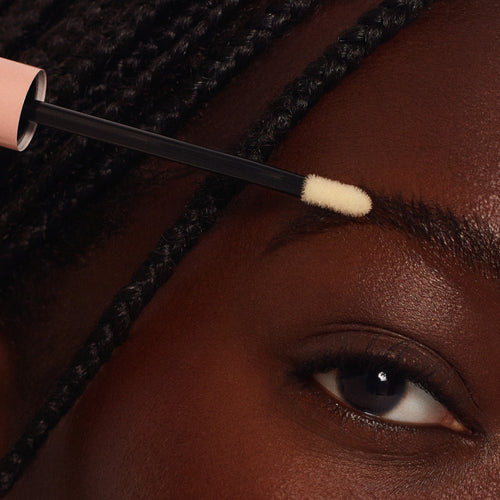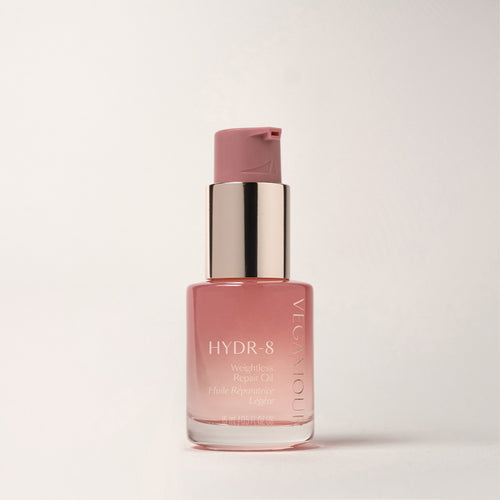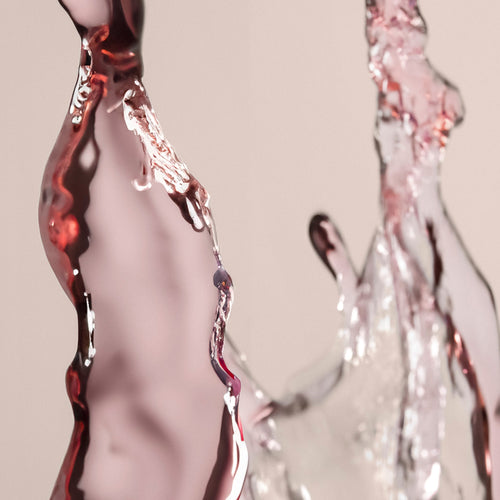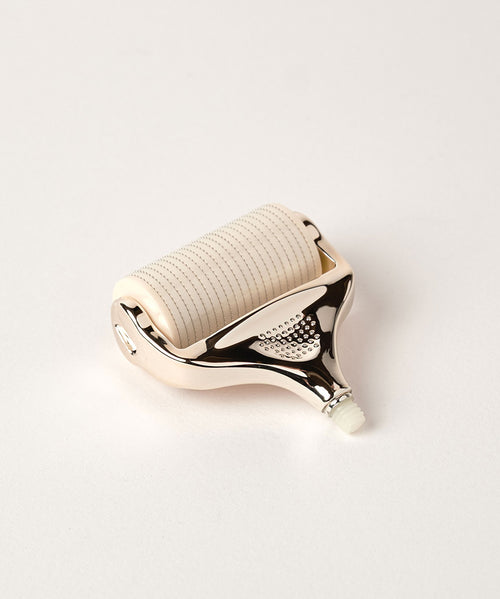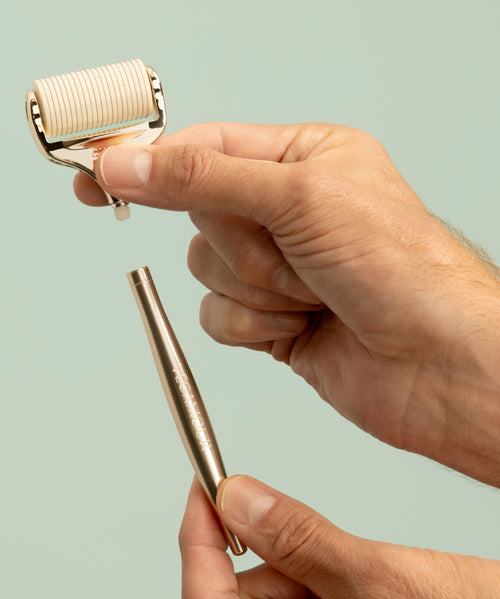Fine hair versus thin hair: What's the difference? Fine hair relates to the texture of your hair, and thin hair relates to its density — both of which are related to your genetics. However, thin hair also can be the result of stress, hormones or a medical condition.
To learn how to tell if your hair is fine or thin, we spoke to an expert and took a look at the science. Plus, find out what products you should start using to encourage fuller, thicker looking hair.
What Is Fine Hair?
Fine hair describes the texture of your hair, which has to do with the actual diameter of each hair strand. Hair textures include fine, medium or thick — aka coarse hair. Any hair type (straight, wavy, curly or coily) can have a fine texture. Board-certified dermatologist Dr. Hyemin Pomerantz, M.D., explained, "Fine hair and thin hair are colloquial terms used interchangeably to describe reduced hair volume. Fine hair is hair with a smaller diameter, which is determined by your hair genes."
The density of hair is also determined by genetics, which influences the size and shape of the hair follicles. Someone who has fine hair can appear to have a full head of hair due to its increased density and natural volume.
Shop: Best-Selling GRO More Kit to Support Thicker Looking Hair
What Is Thin Hair?
Typically, humans have between 80,000 to 120,000 hairs on their heads. Unlike fine hair, thin hair usually refers to the density of strands per square inch of your scalp. With thin hair, someone might notice gaps with the visible scalp on show.
Like fine hair, thin hair can also be determined by genetics. However, someone might also have thinning hair because of hair loss caused by telogen effluvium, which is triggered by stress. Other causes of thinning hair can include certain medications, hormonal changes, diseases or even product build up on the scalp.
Pomerantz said, "In dermatology, thinned hair means decreased density of hair or hair follicles on the scalp. There are many different conditions that can cause thin hair, most commonly androgenetic alopecia, where the hair on the top of the scalp is reduced, and more skin of the scalp is seen through the hair."
It's important to note that all hair types, including fine and thick hair, can be thin due to density, and anyone can experience hair loss at any time, which can result in what is known as thinning hair. If you have noticed more shedding of your hair than usual (often in your hair brush) over an extended period, consult with your doctor to make sure there's not an underlying cause that needs to be addressed.
See: 3 Major Signs Your Hair Shedding Might Be a Bigger Problem
Fine Hair vs. Thinning Hair
When it comes to fine hair versus thinning hair, Pomerantz said, "These are difficult to distinguish because fine hair tends to give an illusion that there is less dense hair overall. Consider two individuals with the same number of hair follicles on the scalp. If one person has finer hair than the other, the one with finer hair seems to have less hair density/volume and a thinner ponytail than the other person with thicker hair."
The key differences between thin hair and fine hair lie in how dense your hair looks and the thickness of your strands. Fine hair is determined by genetics, but it can also thin as someone experiences different events in their life.
"You can have both if you already have fine hair and then develop a hair loss condition," said Pomerantz. "In androgenetic alopecia (male- or female-pattern baldness), the hair follicles become thinner and shallower to the point that they cannot support hair growth. Dermatologists call the thin hair seen in androgenetic alopecia 'vellus hair,' which looks like peach fuzz."
If you're curious, you can easily find out whether you have fine hair by taking a single strand and gently running your finger down it. If your hair feels silky smooth, you might have fine hair. You could also compare a single strand against a piece of average cotton thread. You likely have fine hair if the strand size is smaller than the thread.
Also: 9 Mistakes to Avoid If You Have Fine Hair
Caring for Fine Hair
Once you've defined your hair texture, you can tailor your haircare routine to bring out the best in your locks. Here's how.
Use Lightweight, Nourishing Hair Products
Typically, fine hair textures have fewer cuticle layers, and shampoos, styling products and oils can easily penetrate the strands. Avoid heavy products when you have fine hair because they can contribute to your roots becoming oily too quickly and also weigh down your hair. A gentle, lightweight conditioner and shampoo with powerful phyto-actives and vegan keratin will improve the appearance of hair density, fortify strands and lock in shine without weighing down your hair or causing buildup on your scalp.
Avoid Overwashing
Washing fine hair too often (especially with a harsh shampoo) will drain the strands of moisture, which can result in brittle strands and breakage. Limit washing to one or two times a week for best results.
Use Volumizing Products
When styling fine hair, you'll want to use products to boost volume. For example, GRO Hair Foam is formulated to provide instant body and texture to limp-looking strands. The powerful phyto-actives penetrate the scalp to encourage thicker, fuller-looking hair, and the mousse-like texture covers each strand, adding volume. The formula is safe for daily use, and the relaxing bergamot scent offers a moment of calm in the midst of a busy morning. A dry shampoo can also add more volume to your hair's roots.
How to Care for Thin Hair
In general, fine hair care tips also work well for thin hair, so feel free to incorporate those. However, thin hair often needs additional TLC to thrive.
Consult With a Dermatologist
If you notice that your thin hair is shedding than usual, it's worth checking in with a medical professional. Sometimes hair loss is a symptom of something else. A dermatologist can help diagnose any underlying causes, and once you identify the issue, you can act accordingly.
Detoxify Your Scalp
When your scalp is clogged, it can impact how the hair grows. Use a product that will detoxify the scalp, remove buildup, encourage more moisture and soothe any potential damage. A scalp treatment made with gentle and effective vegan ingredients can help keep the follicles functioning as they should.
Avoid Harsh Hair Practices
To protect the integrity of your thin hair, avoid practices like excessive heat styling and too-tight hairstyles. Instead, seek out hairstyles that don't require heat or pull on your hair follicles.
Consider a Hair Serum
While it's important to use gentle, nourishing shampoos and conditioners to care for thin hair, also consider using a lightweight, non-greasy hair serum for an extra boost. Our GRO Hair Serum contains powerful phyto-actives, including curcumin stem cell extract, mung bean and red clover, which have been clinically proven to reduce shedding and increase hair density with visible results in as soon as 90 days.
It's a Fine Line
Fine hair versus thin hair — there is a difference. Fine hair is the actual texture of your strands, and thin hair considers density and the number of strands on your head. Both the texture of your hair and the number of strands on your head (density) are determined by genetics, but life changes, poor hair care habits and harmful products can result in brittle strands and thin hair.
The best practice is to take a 360-degree approach to your hair's wellness. Eat a hair-healthy diet, reduce stress, stay hydrated, exercise and get plenty of quality sleep. Also, revamp your hair care routine with the addition of plant-powered shampoos, conditioners, foams, serums and supplements that will help reduce shedding and encourage visibly thicker, fuller hair!
#include-related-slider#
More From VEGAMOUR
Photo credit: Oleksandr P/Pexels








